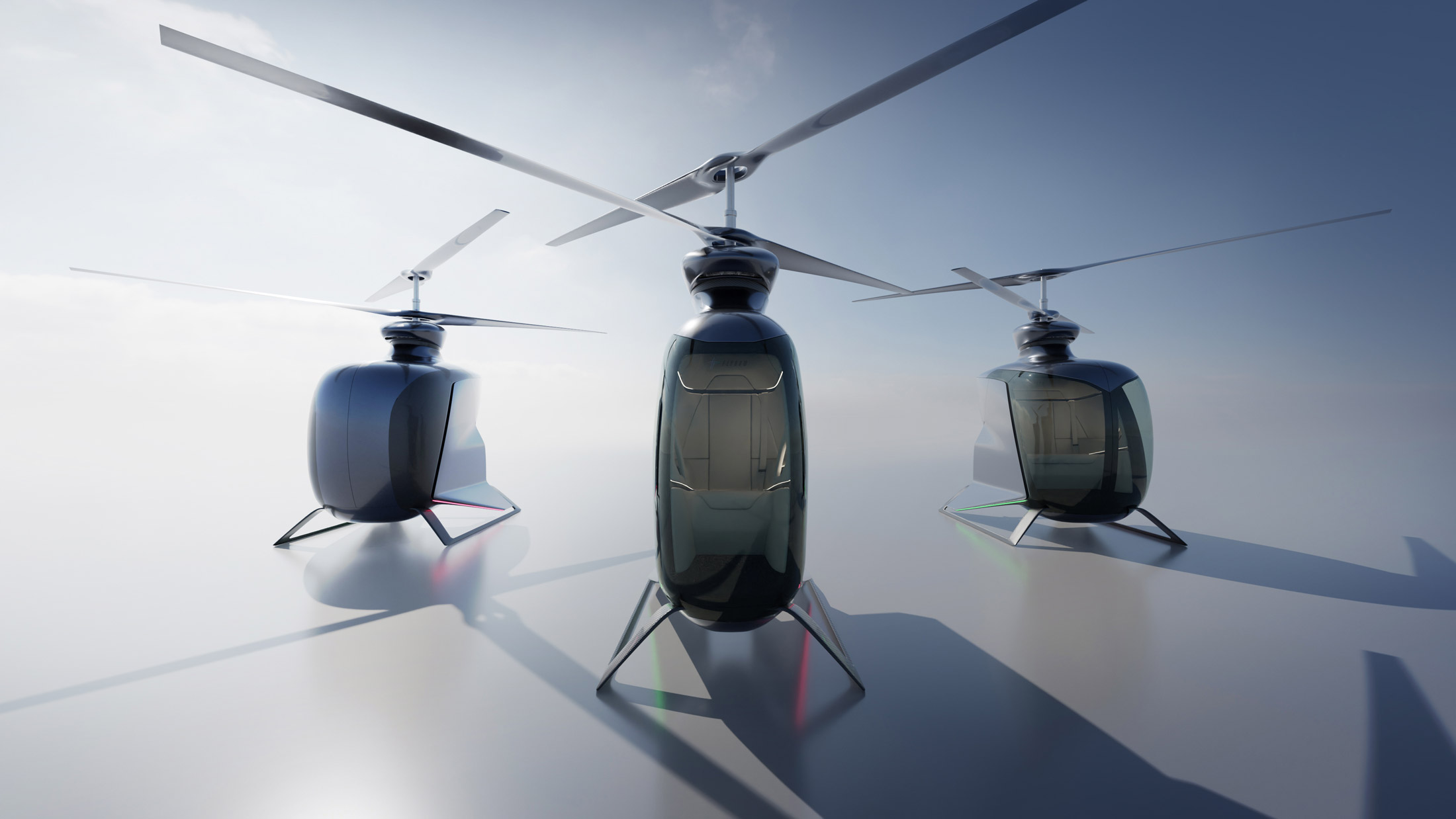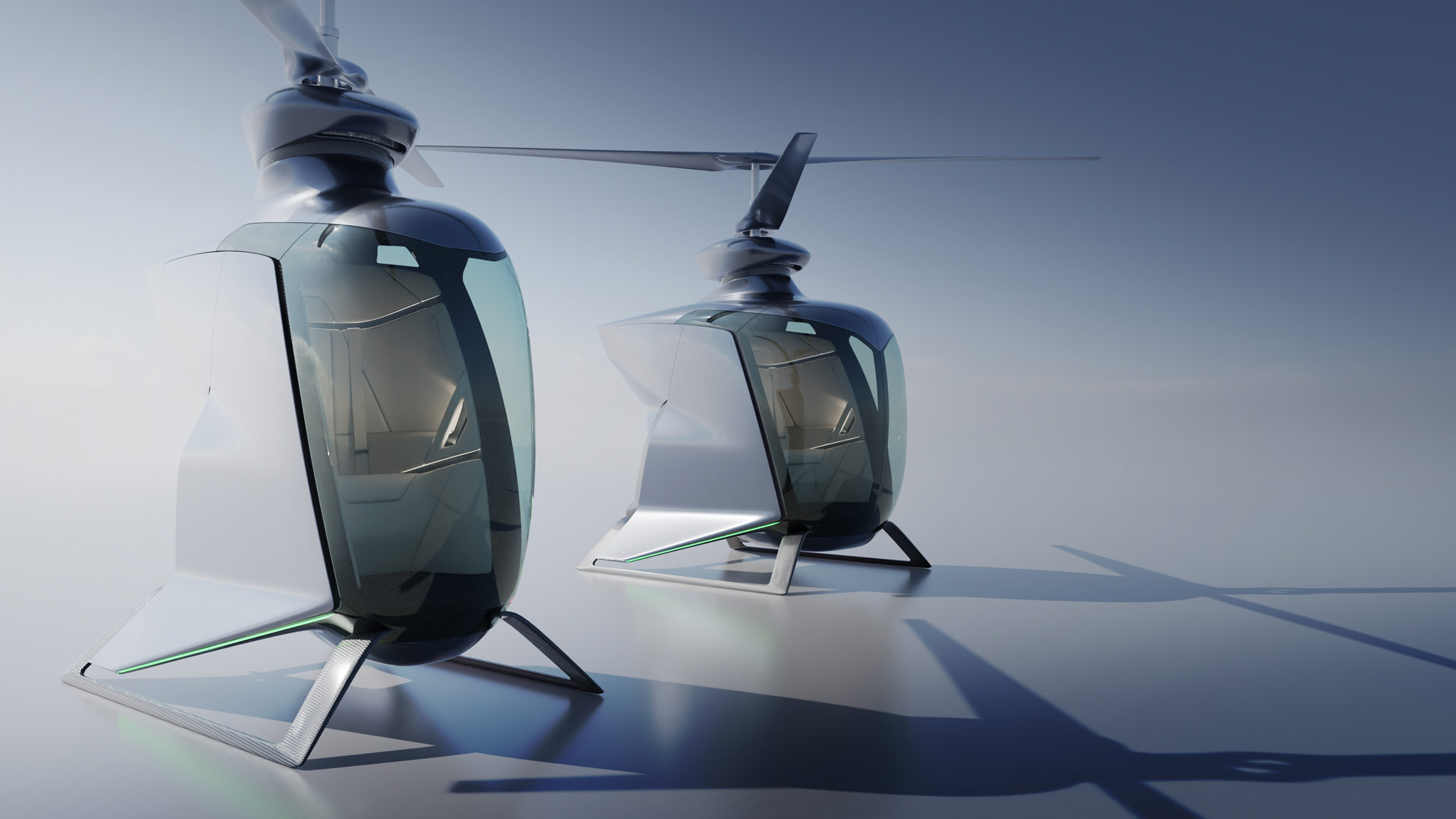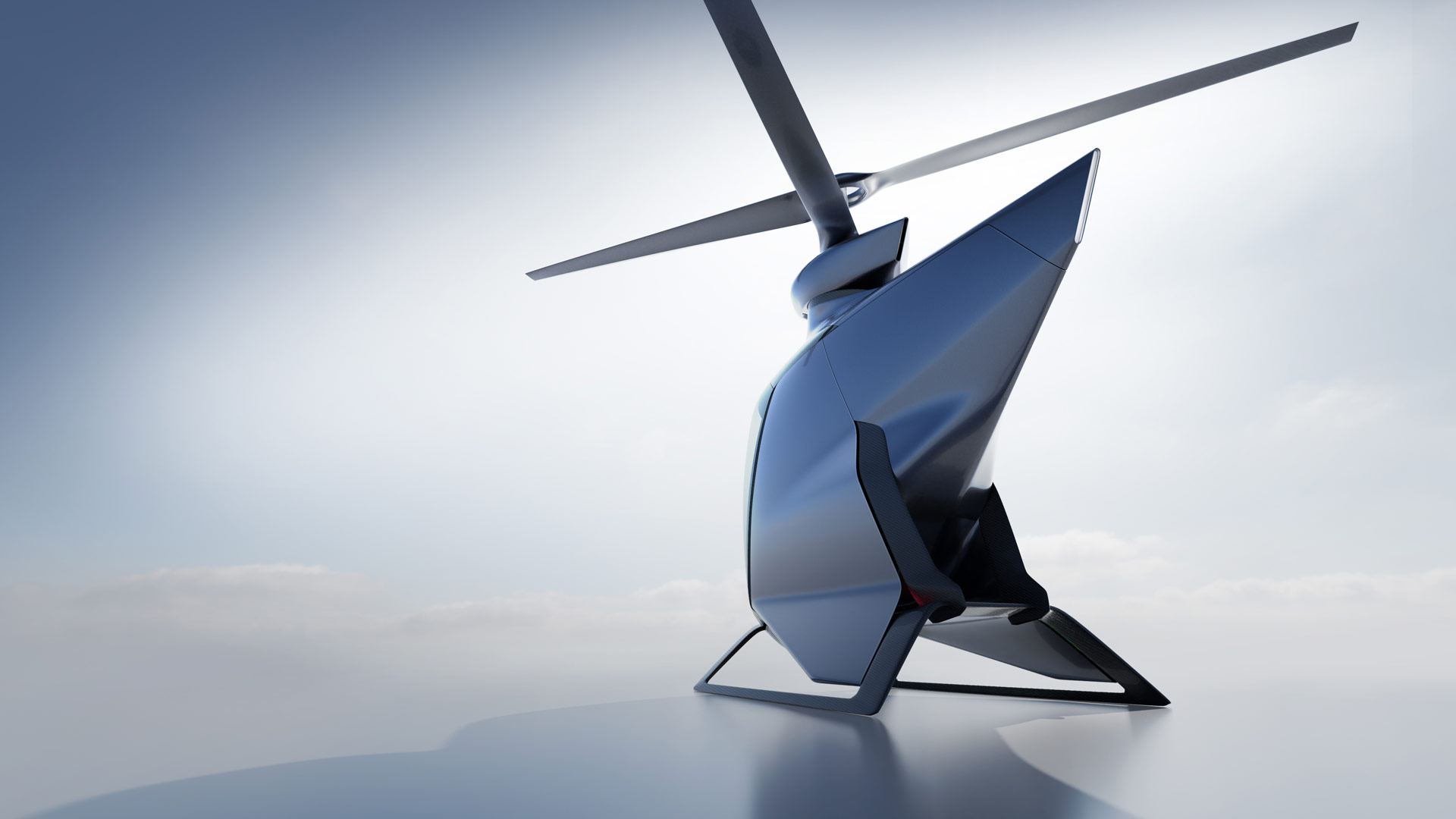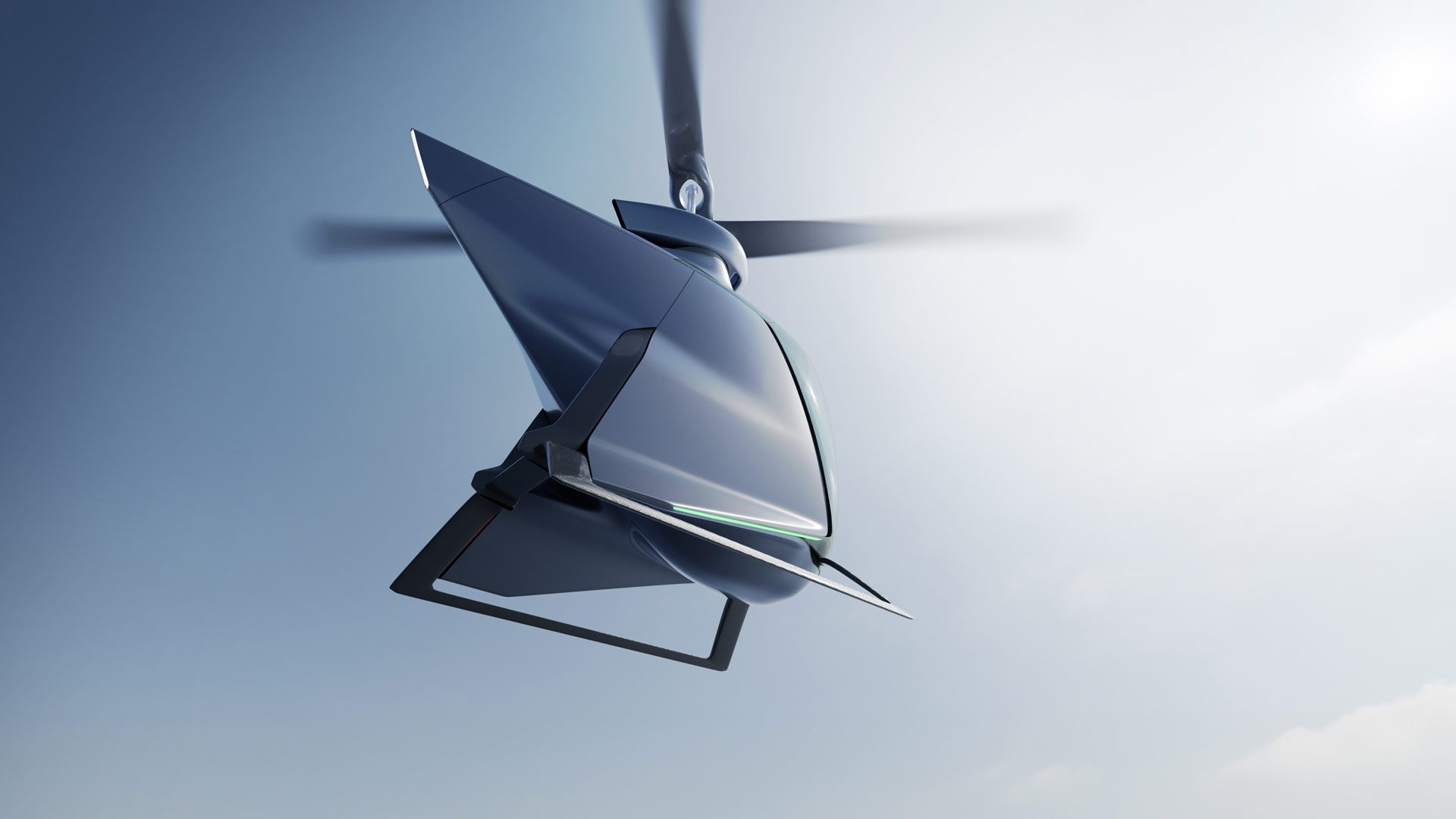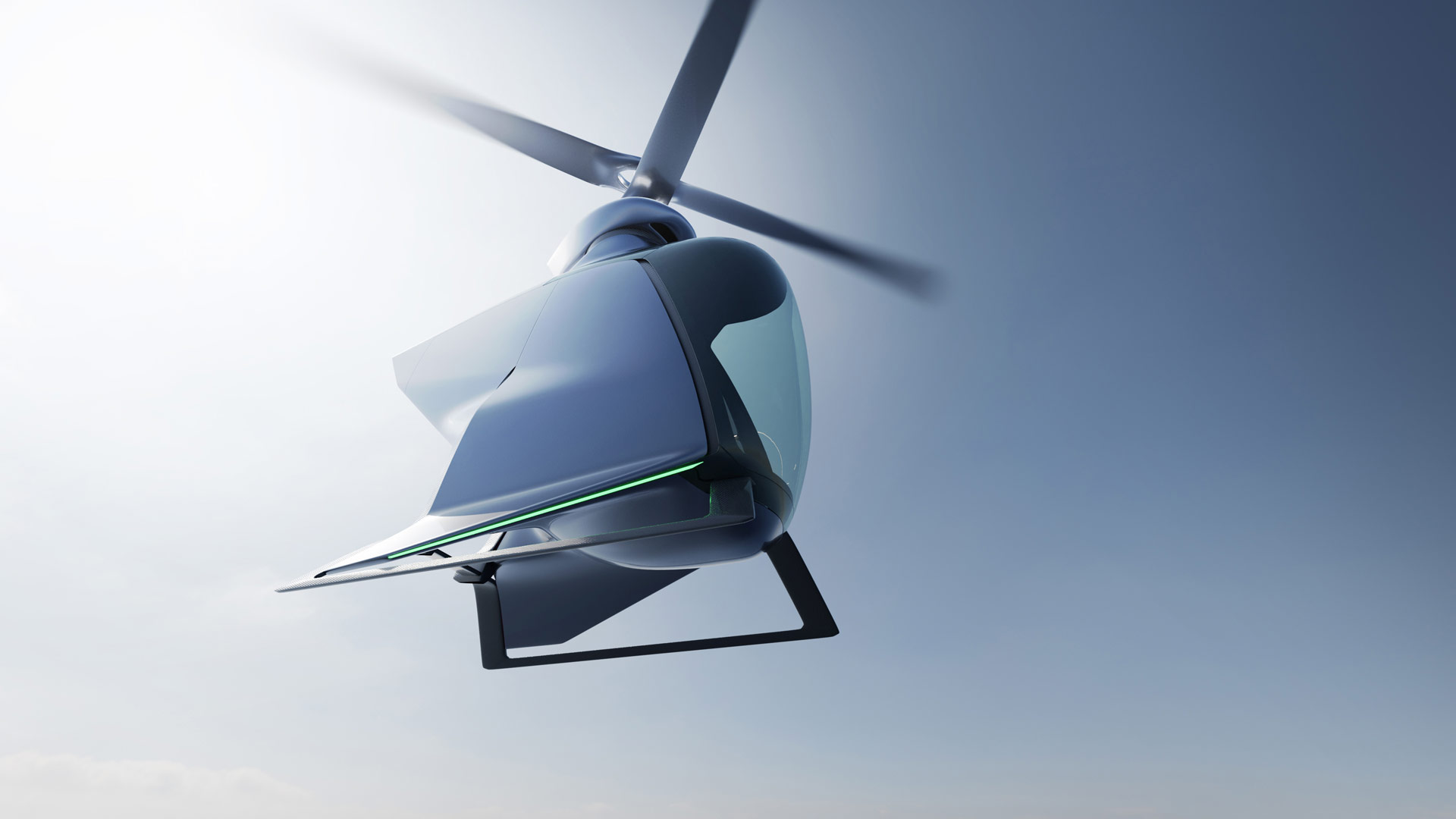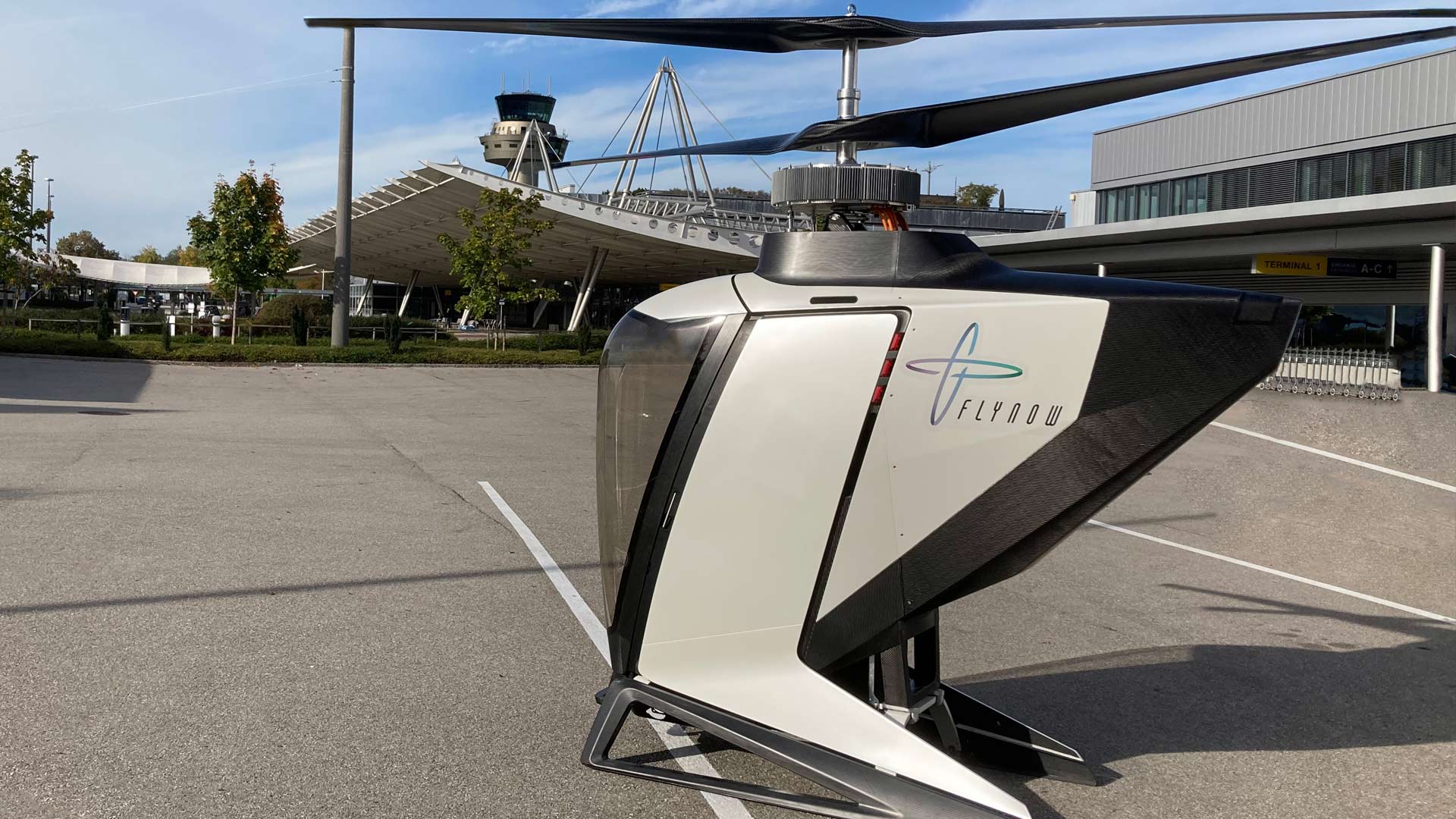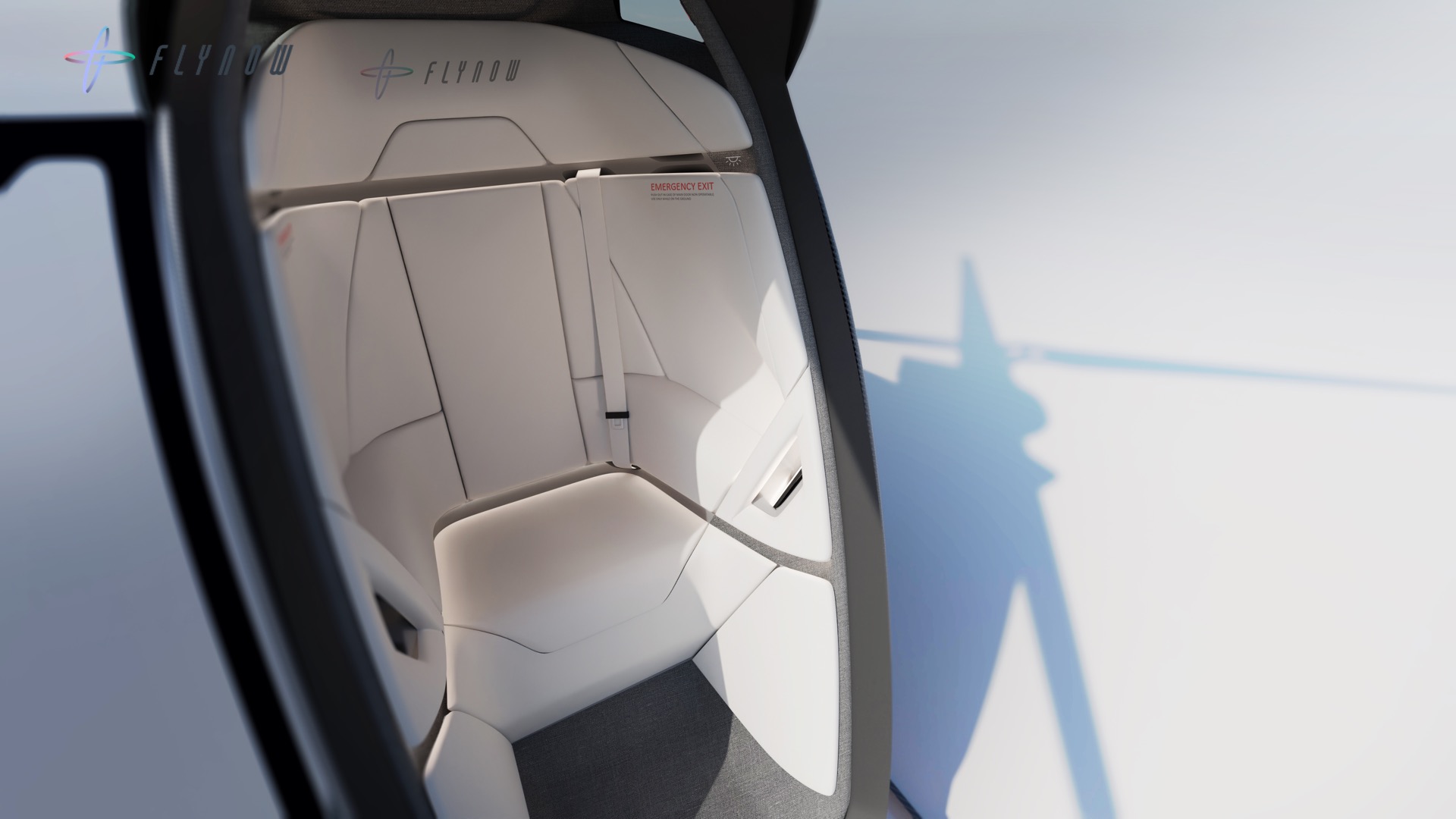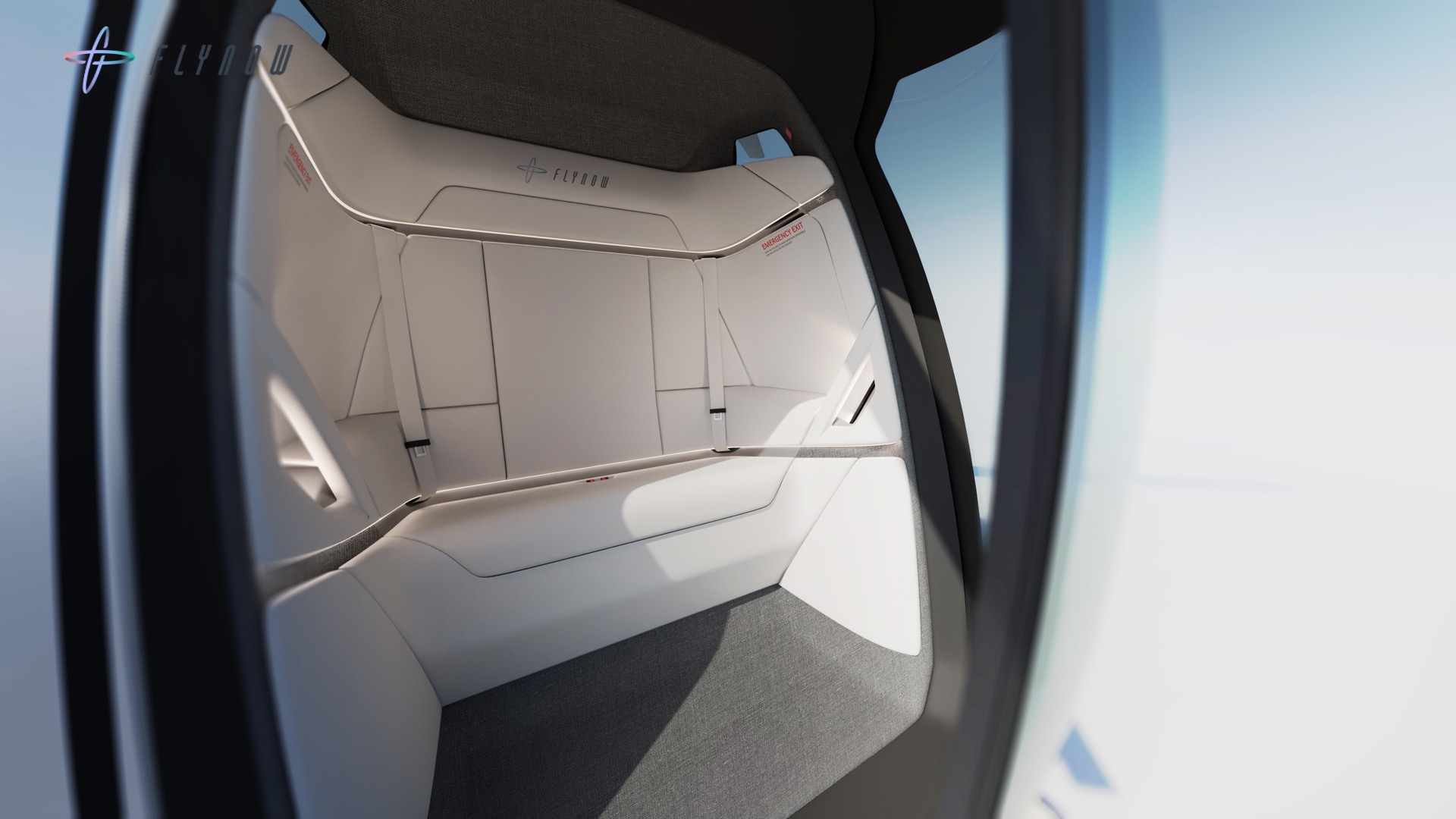First untethered flights (2025-06-12)
Ensuring global mobility for cargo and passengers is increasingly challenging.
Congestion
Traffic collapse in megacities is resulting in a tremendous economic loss. More than 400 billion USD loss per year in US, UK and GER alone.*
*Source: The Economist – The hidden cost of congestion (2018)
Resources
Limited space, budgets and materials are being overconsumed on a daily basis. More than 12 billion EUR running costs per year for mobility infrastructure. More than 85 billion EUR due investment in rail system.*
*Source: BMVI
Pollution
Conventional individual mobility solutions result in pollution & global warming.
55€/ton CO2 in 2025*: More than 15 billion EUR avoidable CO2 cost in 2025 for production of EV-batteries (EU).
*Source: www.bundesregierung.de
Health
Public mass transport systems are a breeding ground for infectious diseases. More than 500 billion USD annual economic cost of influenza alone.*
*Source: Finance & Development – Epidemics and Economics (June 2018, Vol. 55, No.2)
The solution
An Urban Air Mobility vehicle is the central piece of the puzzle.
FlyNow is working on it!
A flying taxi ride isn’t “science fiction”: it is already being developed by FlyNow.
“Urban Air Mobility is designed to complement and extend existing transport infrastructure, providing individuals with more options to reach their destination.”
Jürgen Greil,
FlyNow CEO
Our Mission
Revolutionize Urban Air Mobility like Henry Ford did the passenger car with his “Model T”.
With five core USPs that make all the difference.
Cost
10x lower production costs compared to market competition.
Unmatched flight time and range.
Emission Levels
High social acceptance and great inflight experience.
Operability
Profitable operation of large fleets and great customer experience.
Fast time to market in a multitude of jurisdictions.
Cargo, Single- & Twin seater
Payload max. 200kg
570 kg
Max. takeoff weight
30 min
Flight Time
130 km/h
Max. Velocity
<55 dB(A)
@ 150m Altitude
50 km
Approximate Range
Zero CO2 emission
Benchmark in efficiency
Frequently Asked Questions
Use case
Our goal is to make 3D mobility affordable for all people. An inner-city flight should cost no more than a normal taxi ride on the same route. We achieve this by breaking completely new ground in production. Our motto is “intelligent simplicity” instead of “stupid complexity.” Our eCopters consist of just a few core subsystems: rotors, cabin, batteries and electric motors. We have developed a compact design without many connecting parts that could bend or break. And because the drones are particularly lightweight, we need less material and can get by with smaller batteries. This explains the low costs, which in turn enable low prices for end customers.
In principle, our eCopters can be used wherever a high level of effort is required to transport goods or people from A to B. The range extends from supplying sailors on container ships, which often do not go ashore at all, to remote alpine huts to bridging a traffic bottleneck like the Bosporus in Istanbul. Instead of laboriously circumnavigating e.g. Lake Constance, drones can fly directly from one shore to the other. The same applies to cities on rivers and by the sea.
Our first eCopters to be used commercially will be cargo variants with battery-electric drive. This minimizes the licensing risk and makes it easier for operators to obtain an operating permit. Passenger transportation is the second step. Based on market analyses, we assume that people who belong to the group of so-called “innovators” and “early adopters” will be the first to use a completely new mobility concept. We are aware that 3D mobility will only be fully accepted when it becomes clear that not only a privileged part but the whole society will benefit as there will be less congestion, air pollution and noise once traffic is shifted to the third dimension.
Our eCopters are designed for transporting Euro pallets and people with light luggage and are conceivably unsuitable for carrying armament and combat operations.
Profile of FlyNow
We not only have the necessary academic training in traffic engineering and transportation, aerospace engineering, computer science, manufacturing engineering and business administration, but we also have decades of experience in the development and industrialization of complex technologies in the mobility industry. This is a key competence for turning a good idea into successful products.
FlyNow Aviation develops, produces and distributes the eCopters. For the operation, we are in advanced discussions with potential partners, with whom we jointly form the necessary ecosystem of take-off and landing sites and the flight management and booking system, which is also an essential part to ensure 3D mobility.
We are developing a modular family of “eCopters”, which consists of a cargo- and a single-& twin seat passenger version. The name “eCopter” results from the fact that, due to the coaxial drive train with two rotor propellers, it is by definition not a drone, but an electric helicopter (hence the name “eCopter”) and therefore existing EASA regulations such as the CS-27 and the CS-VLR can be used with regard to certification. This significantly simplifies and speeds up the certification process.
The different variants are titled by a combination of letters and numbers, which indicate the function, payload and type of powertrain. The designation for the cargo variant is C200B, the one- or two-seater passenger variant is P1B resp. P2B. The B at the end stands for the battery-electric powertrain, a hydrogen fuel cell variant which is also being prepared for later and will then be designated with an “H”.
Concepts
Due to the low energy density of batteries drivetrain efficiency is key for a successful implementation of eVTOL aircraft. There are many variables defining the efficiency, but one of the most important is rotor disk loading. That is why NASA also chose the coaxial configuration for its Mars Helicopter “Ingenuity”, generating enough lift even in an atmosphere density a 1/100th that of earth.
Our eCopters are considered eVTOLs, i.e. electric Vertical Take Off & Landing Vehicle. That’s how EASA defines it and represents a new category in the sky. The term “drone” as used in common parlance, doesn’t quite fit, it’s more like “small helicopter”. Our approach is to try to make technically established flying machines smaller and simpler rather than scaling up a toy-like concept to make them more environmentally friendly, quieter, safer and cheaper.
We have developed a unique concept based on easily combinable modules. For example, we don’t change the entire design and replace the electric motor (that would be very expensive!) to turn our one-seater into a two-seater. Instead, we synergistically adapt the components such as the battery and motor to the requirements, and the production processes remain the same. This reduces cost as well as the probability of errors, i.e. leads to more safety. The same principle applies if a cargo eCopter is to become a passenger eCopter. This concept of an “eCopter family” is unique in the industry.
A new form of mobility will only be successful if it is safer, more comfortable, faster and, above all, cheaper than the existing means of transport. With increased environmental awareness, the question of ecological impact is also becoming central; we can score points here with quiet and fuel-efficient vehicles. We assessed the whole value chain and came to the result that our concept is probably the only one that can really earn money in the future. This is due to a consistent focus on efficiency. With respect to the eCopter, which is a single-seater flying automatically without a pilot; the design, which is based on physical cause-and-effect chains; the series production. In this way, we achieve cost-effective, quiet and safe operation – with minimal demand regarding resources and space.
A Personal Air Vehicle (PAV) is a small, automatic flying aircraft that enables individual 3D mobility at affordable prices for everyone. The counterpart is the Cargo Air Vehicle (CAV) for transporting goods.
We are developing a modular family of vehicles. By making according changes to the design of the cabin, eCopters can be built for goods as well as for people, single-seaters and twin-seaters. We will produce eCopters with batteries and with Hydrogen fuel cells. The modular concept reduces technical errors, increases safety and lowers costs.
Automatic flying means that the aircraft flies along a fixed route and its respective flight path follows a flight plan. This has been practiced successfully and safely in aviation for many years. One can imagine such a route as the cable of a cable car. Autonomous flight would be quite different: here the aircraft selects the route on its own and needs to make safety-critical decisions in realtime. We know that there is currently a lot of talk about “self-driving cars”; the reality is, however, that the necessary technology (i.e. mainly artificial intelligence) will not be ready for a vehicle to make its own decisions for several more years if not decades.
This also applies to flying. The European Aviation Safety Agency (EASA) assumes that autonomous flying will not be technically and regulatory feasible until well after 2030. FlyNow is sticking to what is actually technically feasible.
Production
We benefit from decades of experience in the automotive industry. We know how to reduce costs along the entire process chain, e.g. designing vehicles in such a way that components can easily be replaced and maintained. This might also be true for the conventional aviation industry, however, the key lies within the architecture and the genes of our vehicle, which offers more opportunities to leverage effects from this approach. Furthermore we cooperate with small and flexible supplier companies with flat hierarchies but who are backed by large mother companies that can also produce high volumes. This also reduces costs.
FlyNow carries out the final assembly of supplied components and assemblies. Renewable electricity from photovoltaic installations on the roofs of the production halls will most likely suffice for this. Together with our partners and suppliers we will define environmental standards to be as green as possible “from cradle to grave”. The drones themselves fly battery-electric. How green the electricity for operation is depends on the operator’s locally available options. Depending on the composition of the electricity mix, CO2 emissions will therefore also vary.
By proving that we have better concepts. From 2024 onwards the first cargo drones will fly commercially on selected routes. This will show what advantages they have over existing solutions: more flexible, faster, more cost-effective.
One thing is clear: 3D mobility is currently experiencing a boom, much like electric vehicles did ten years ago. The interest of potential investors is correspondingly high. As with any new technology, there will be great advances, but also setbacks. And there will be an ecosystem of very different manufacturers and suppliers, just as with cars, trains and other means of mobility. We are certain that our concept will make an important contribution to this.
After two generations of scaled models, which we mainly used for software and control validation, we started to test a full scale proof of concept beginning in the summer of 2023 at Salzburg Airport. After successful tests at the component level, the entire system was put into operation with regard to mechanical, electrical, acoustic and systemic criteria and the entire operating range was successively compared with the simulation results in real operation. These results are now incorporated into the following series development.
Salzburg is located at the center of our development and supplier network, which stretches from Linz in the east to Munich in the west. In addition, the city is well connected by highway and airport.
Safety
Since the foundation of FlyNow we have been in close contact with AustroControl, the Austrian aviation authority. AustroControl not only regulates all air traffic in Austria, but also takes care of all tasks concerning navigation services, certification and airworthiness, as well as licensing and supervision of aeronautical development and production companies. We have made our development steps transparent to AustroControl from the very beginning and provides advisory services as well as connections to the European aviation authority EASA (where the certificates for the production of the cargo and passenger variants will ultimately come from). The respective operating companies will obtain their own licenses for their ongoing operations. FlyNow is limited to development and production, at least for the time being.
When it comes to safety – as is customary in commercial aviation anyway – we make no compromises whatsoever. That’s why all critical systems are redundant. Each rotor is driven by its own electric motor, which in turn consists of four independent units. In other words, a fourfold “safety net” against possible motor failure. Should one of the motor segments fail, it will be substituted by the three remaining ones and due to our coaxial concept of two counter rotating rotors, acting along one main center line, there would also be no change to the flight behavior. The eCopters are also optimally protected against collisions: should their flight path cross that of a rescue helicopter, for example, they simply remain stationary in the air for a moment. Larger birds usually take evasive action at the cruising speed of 130km/h, but are also detected by our sensor technology to be able to fly an evasive maneuver. In order to obtain certification, we have to (and can) demonstrate the same safety standard as is required in scheduled aviation, which is rightly considered the safest way to travel in general.
No, the flight behavior is calm due to the fact that the cabin is arranged below the rotors and is simply held in a stable position by gravity. In contrast to that multicopters with their propellers being arranged laterally in a ring, must be stabilized artificially at all times.
Sustainability
The eCopters are lightweight. That’s why they require only about one-eighth of the resources in production compared to an average car (steel, aluminum, plastics, …). We also do better by a factor of 1/100 to 1/1000 in terms of infrastructure than cars, for which roads and bridges, tunnels and gas stations have to be built. For the flight, we calculate a consumption of 30 kilowatt hours per 100 kilometers.
That’s right: It is noisy in cities. On average there is a background noise of 60 to 65 decibels. Our eCopters, which will fly at an altitude of 150 to 300 meters, will produce only 55 decibels on the ground – which means that you will probably hear nothing at all in a usual city ambience. We achieve this low value through a special concept: two sets of rotors mounted one above the other. They generate the necessary lift at a lower rotational speed than other drones or multicopters.
To take off and land about ten by ten meters (100 square meters) will be required, necessary safety distance is already included. Especially in big cities, there are many large flat roofs, e.g on supermarkets, office buildings, hotels, event centers and especially on parking garages. They would be suitable as take-off and landing sites. This is because our eCopters are very light: single-seaters have a maximum takeoff weight – including the passenger – of 360 kilograms, and two-seaters 520 kilograms. Most flat roofs are designed for much higher loads. So they would not need to be retrofitted.
Today, in many cities there are five to ten percent more cars than the road network can handle. The result is constant traffic jams and the so-called rush hour extends to several hours. Our scenario is as follows: if the traffic that is already too much today could be shifted into the air, everyone will benefit: car drivers and passengers alike will reach their destinations faster. In addition, the environment will benefit because light and quiet air vehicles now take over and no additional roads need to be built. As a solution ropeways are already being discussed in many major cities. They have the advantage of requiring little space on the ground. eCopter services are basically cable cars without a rope, but with propellers. Politics in Europe aims at a large scale push back on inner city car traffic in favor of ecologically compatible solutions. So eCopter services can also be part of public transport and operated by cities.
Autonomous flight will hardly be possible in the foreseeable future. It requires a great deal of additional technical effort and will probably be very expensive. In our view, “flying everywhere” generates additional traffic rather than helping to relieve neuralgic traffic hot spots. With our strategy, we want to be part of a sustainable solution and not create additional traffic problems. In addition, from a regulatory view, it will only be possible to take off and land in designated areas.
Traffic
Urban Air Mobility, or UAM for short, uses the airspace above urban areas to transport goods and people. There are two areas of application: between cities and within cities. Our eCopters are primarily intended for air transport within metropolitan areas and for distances up to 50 kilometers. They will take off and land vertically flying in an airspace that has been almost unused, i.e. at an altitude of 150 to 300 meters. And they will do so, like airliners, on fixed routes. Traffic in three dimensions, which is why we also speak of “3D mobility”.
Not at all. Even if a high proportion of traffic takes place in the third dimension, the sky will not “go black.” The average speed there is higher than on the ground, and the definition of airways can be more flexible and staggered at different heights. Noise and emmission levels will drop. Even on the ground, things don’t get tight. Vertical-launch drones require significantly less space compared to other modes of transport.



